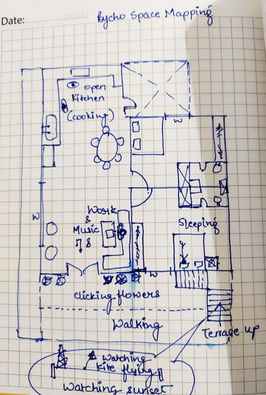Interpreting Home
Exploring how the home influenced the lives of young individuals during and after the COVID-19 lockdown using remote ethnography.
I set out to understand the role that the home played in the lives of young people aged 20 to 25, during and after the COVID-19 lockdown. I wanted to explore how they were adapting, creating, and coping while being confined to their homes.
Through digital ethnography, I looked for innovations, routines, and behaviors that emerged in response to the challenges of this time, mapping the subtle yet significant ways people reshaped their everyday lives.
Glimpse of the photos from the photovoice experiment
Space mapping gave us clearer understanding to form patterns and make our synthesis

The spatial mapping of participants' home
As a design researcher, I spent three weeks working with 13 young people aged 20 to 25 to understand how the lockdown shaped their lives. I began by reviewing existing content on the topic to ground myself in what was already known.
Then, for three days, I invited participants to participate in a photovoice experiment, an ethnographic method that allowed them to share glimpses of their daily experiences through images. I also ran an online survey to gather quantitative insights into their routines and behavior patterns. Since in-person visits weren’t possible, I used space mapping and digital photo participation to explore the layout and feel of their homes, uncovering details that might otherwise have gone unnoticed.

One of the key patterns: The bedroom revealed itself as a flexible, multi-purpose environment

One of the key observations



